With the recent addition of “Strands” on March 4, the New York Times now hosts 10 games on its website with new rounds of each game available daily. These games range from easy to hard, text-based to image-based and skill-based to luck-based. The Paly Voice took a look at all 10 games to see which are worth incorporating into your daily routine and asked some students at Palo Alto High School for their input as well.
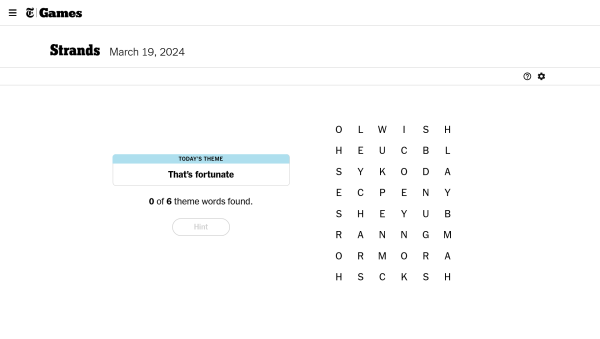 |
Strands: 9/10
Strands is played on a six-by-eight grid of letters. Similar to a word search, players connect adjacent letters to create words. A theme is provided each day which is tied to the spangram and the six theme words. The goal of the game is to find all the theme words, which use every letter on the board with no overlaps. Though its mechanics sound complicated, Strands is easy to learn and its difficulty is easily adjustable with the inclusion of hints. Strands offers a fun new spin on the familiar word search game and is a great addition to New York Times’ collection. Student opinion: “Their best game yet. It’s very fun, takes a while though.” — Boris Nezlobin, 10th grade |
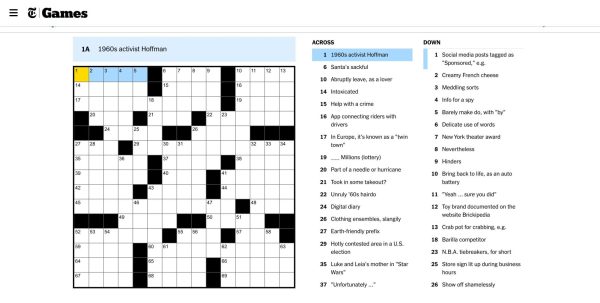 |
The Crossword: 7/10 A newspaper classic, the New York Times’ daily crossword can only be accessed in print or with a New York Times Games subscription — though a handful of past puzzles from the archive are available to all users. As with any crossword puzzle, players are given hints and need to guess words that fit in the spaces allotted. Many words overlap and share letters. You can never go wrong with a crossword, but it’ll never be spectacular. Student opinion: “It’s fun but I’m lowkey bad at it. I can only finish the [easy] ones.” — Jacqueline Li, 12th grade |
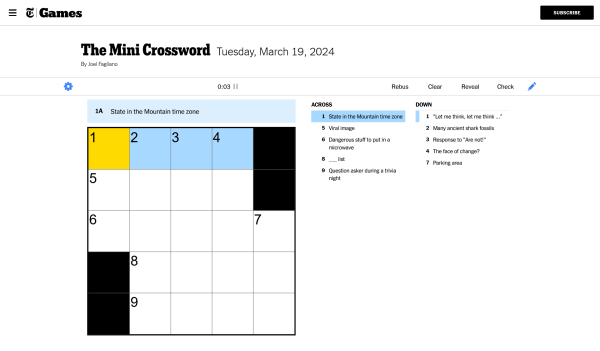 |
The Mini: 7.5/10
A remix of the classic crossword, the Mini allows players a quick taste of the crossword. Just like any crossword, players are given clues to fill words into the rows and columns of the game. Unlike the Crossword, the Mini is accessible without a New York Times Games subscription. It’s a quick game to get your brain going in the mornings. Student opinion: “It’s great, better than the original crossword for sure.” — Elsa Lagerblad, 10th grade |
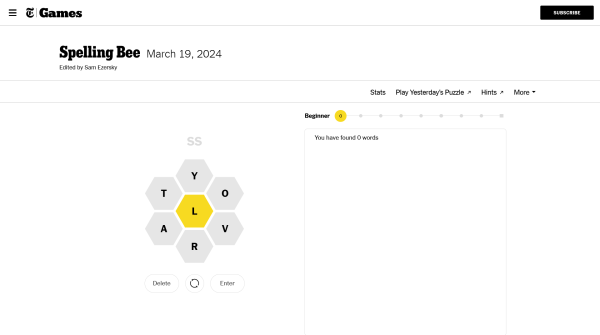 |
Spelling Bee: 5/10
A game perfect for fans of Wordle and Letter Boxed, Spelling Bee is a game to test your dictionary through a quick spelling quiz. The game requires players to string together words united by the center letter of the day. A New York Times games subscription is required to play past a certain amount of points. Spelling Bee is a nice game to add to your list. Student opinion: “I only do it if I run out of the other games.” — Adeline Kwan, 12th grade |
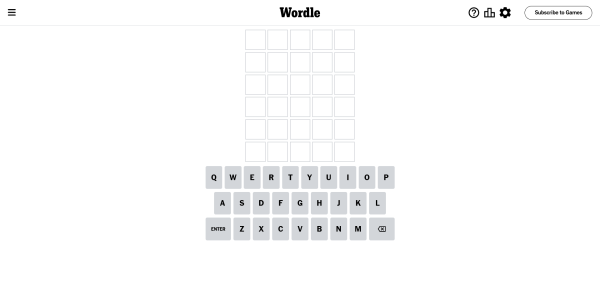 |
Wordle: 8/10
Software engineer Josh Wardle originally created Wordle in Oct. 2021. and The New York Times bought Wordle in Jan. 2022. Players have six chances to guess a five-letter word and are told after each attempt which of their letters are correct (green), which of their letters appear in the word but in a different position (yellow), and which of their letters do not appear in the word at all (gray). It is fun, quick and at times deceivingly difficult. However, the prominent luck factor gets annoying. Student opinion: “I’ve been playing Wordle since the third grade. I think it’s really fun. I also love seeing the streak.” — Alara Martin, 10th grade |
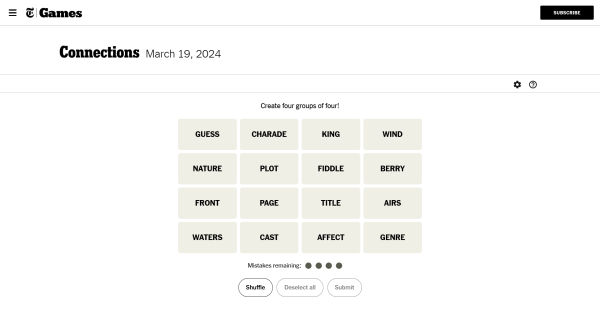 |
Connections: 9/10
This is the second-newest game from the New York Times. The game’s goal is to string words into categories. There are whimsical group names ranging from yellow (easiest) to purple (hardest). This puzzle will broaden your knowledge of little fun facts and can be enjoyed by trivia experts to amateurs. A fantastic addition to the New York Times games collection. Student opinion: “Connections is very funny but the purple [hardest set] is either very easy or impossible so it makes me very frustrated sometimes.” — Shuya Lam, 12th grade |
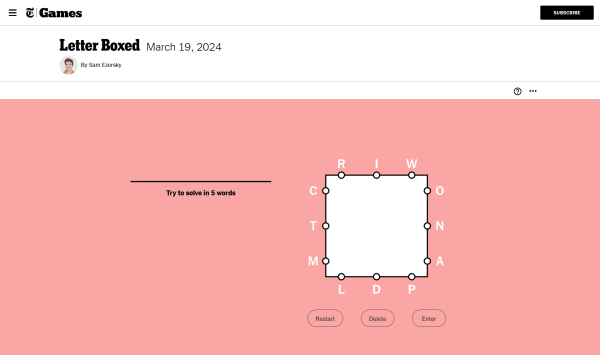 |
Letter Boxed: 4/10
In Letter Boxed, players are presented with a square with three letters on each side. You can create words by selecting letters in sequence, though you can not select two letters on the same side consecutively. The goal is to use every letter on the box in as few words as possible, and each word after the first one starts with the last letter of the word before. A New York Times Games subscription is required to play more than once a day. A fine game, but not particularly thrilling and at times too gimmicky. Letter Boxed is inferior to every other New York Times word-based game. Student opinion: “I don’t play this one as much, it’s just not as fun as the others.” — Elsa Lagerblad, 10th |
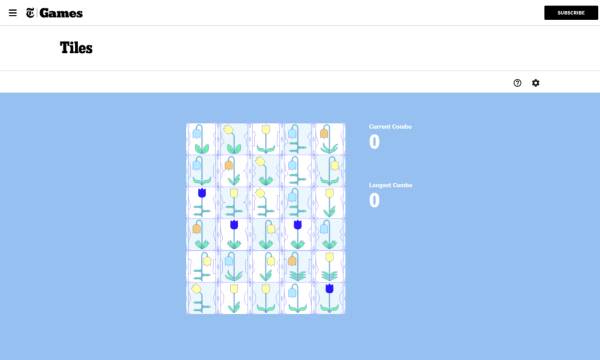 |
Tiles: 6.5/10
This game definitely wins “Best Visuals” award. With visually stunning tiles filling your screen, players find similar components in the pieces and connect them together to slowly fade the picture away. Every day you can expect an entirely different color palette and array of geometric shapes. It’s an entirely different feel from the rest of the New York Times game selection and is perfect for your morning meditation. A limited amount of games per day are available to everyone, but to play the full catalog, a New York Times games subscription is required. Zen mode, which generates infinite tiles, is also locked behind the subscription. Student opinion: “It’s nice and relaxing, but it’s not as intellectual as the other games, so I don’t play it as often.” — Alara Martin, 10th grade |
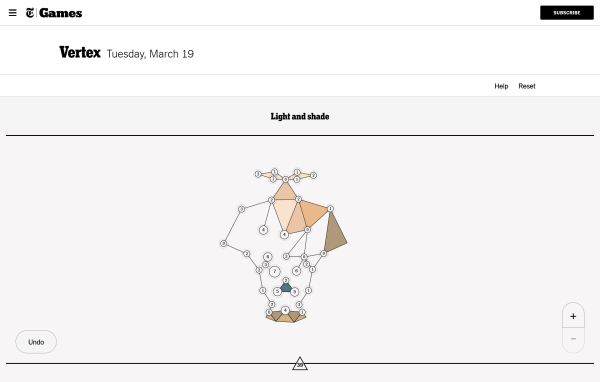 |
Vertex: 6/10
Vertex is essentially an upgraded connect-the-dots game. Players are given a partially completed connect the dots, and instead of unconnected dots having numbers detailing the order of connection they have numbers showing how many more times they connect with other dots. For example, a dot with “2” on it would signal that dot as having unmade connections to two other dots. A fun, pretty and casual game. A limited amount of games are available to everyone, but to play the full catalog a New York Times games subscription is required. Student opinion: “It’s not even a game, it’s just connecting the dots except you’re not even connecting the dots because they show you where to go.” — Rachel Ho, 12th grade |
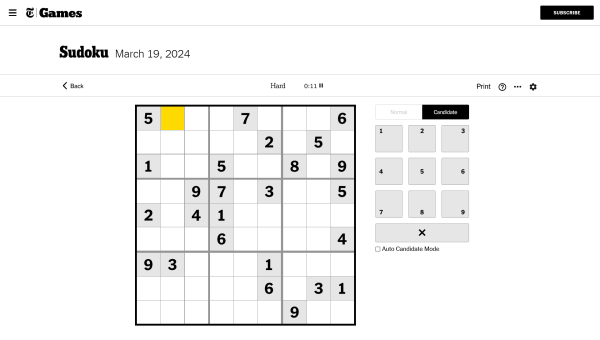 |
Sudoku: 3.5/10
This is the only number game from the New York Times. Take a break from the words of newspaper articles, and instead try this numerical classic. While I’m not certain that it is a New York Times staple when the series mostly consists of word games, it is a unique choice that offers players more freedom. If you’re tired of all the word games, try Sudoku! Student opinion: “The hard ones are really hard. I remember raging over Sudoku” — Shuya Lam, 12th grade |



